
Layout, design and features …
As already mentioned, the PSU is a whopping 21 cm long.
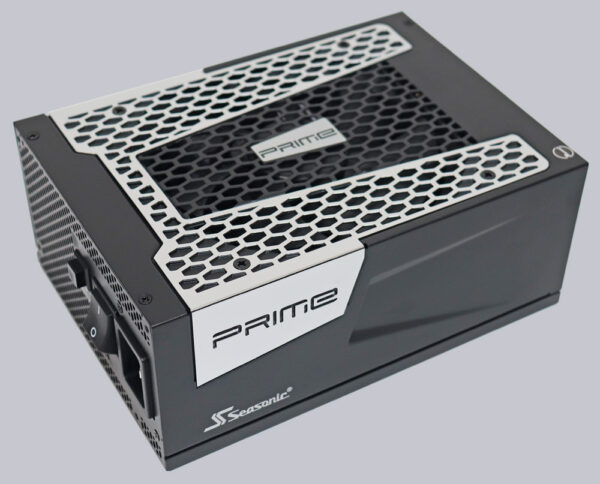
You should therefore measure exactly whether the available space is sufficient for installation before purchasing.
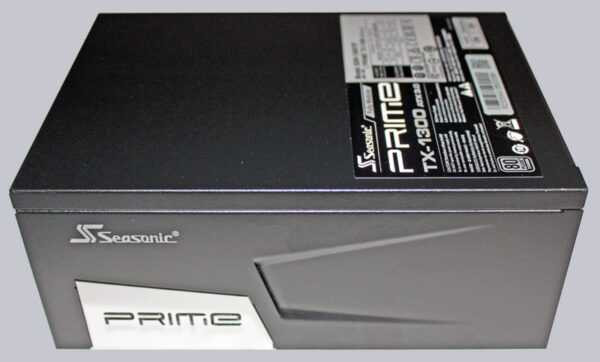
The TX-1300 is equipped with a 135 mm fan located on the top. As this is mounted on liquid bearings, it should hardly be audible during operation. However, we will explain later that it doesn’t have to go that far.
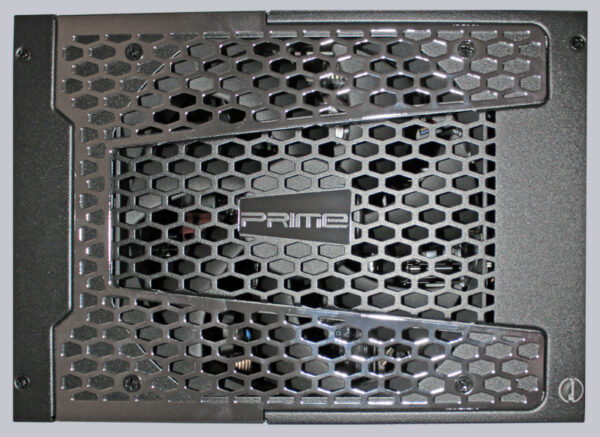
It is a fully modular PSU, which facilitates installation in the housing. The connections are all neatly designed, easy to reach and clearly labeled.
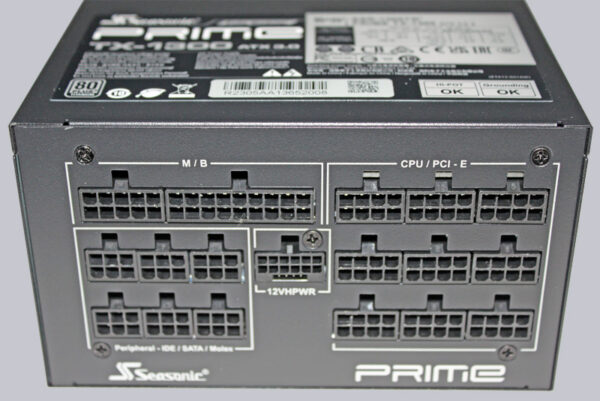
The front is also interesting. As already known from other models from the manufacturer, the hybrid mode button is located here. If it is pressed, the fan stops in the lower power range and only starts to rotate from approx. 300 W upwards. If it remains unpressed, the fan runs continuously. Next to the large power switch, however, the unusual IEC socket stands out.
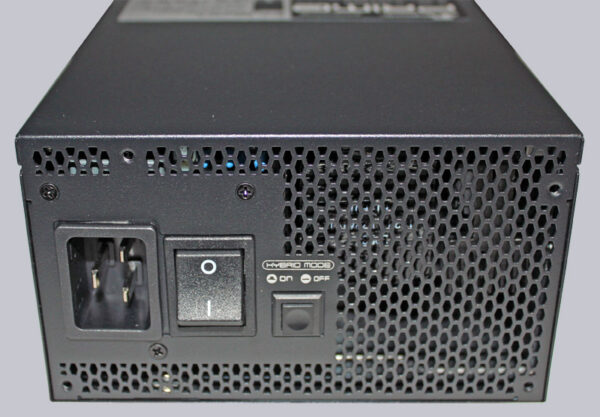
This does not correspond to what we are used to from other PSUs. Instead, Seasonic supplies a power cable with a special plug. Unfortunately, the clever user will of course immediately notice that this plug cannot be replaced by a normal power cable. Contrary to first impressions, however, it is a standard plug that can be purchased in stores. The model is called IEC 320 C19. These are necessary for the transmission of high currents.
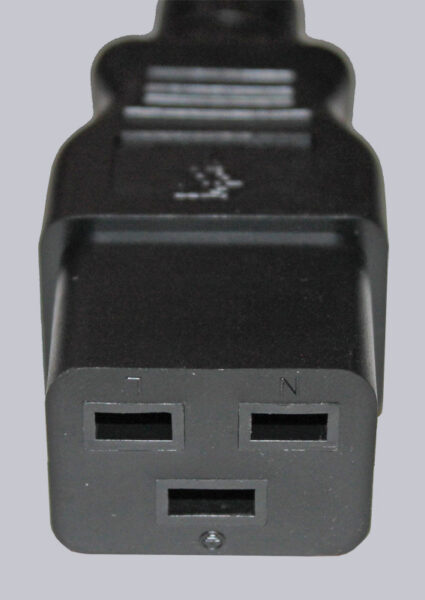
However, Seasonic provides a cable that makes our heart beat faster. Attentive readers may have already seen it in our recent review of the MSI MEG Ai1300P PCIE5 PSU. The 12VHPWR power connection, which can supply current graphics cards with up to 600 W of power. It is important to ensure that the plug is properly seated in the graphics card connector, to adhere to the recommended bending radius and to check the plug regularly to ensure that it is firmly seated.
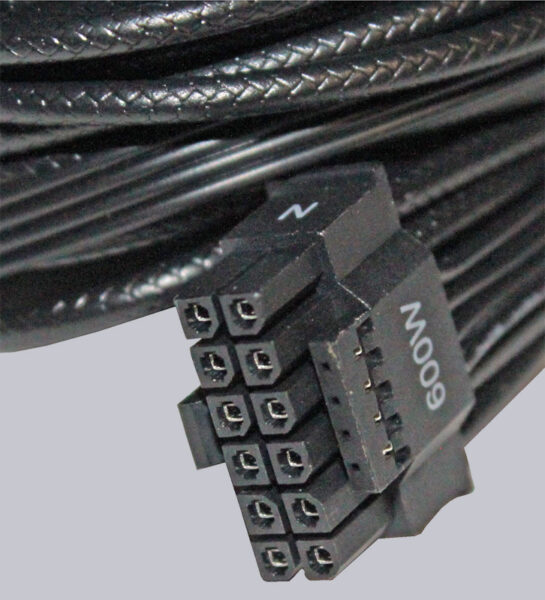
Of course, the 1300 W power must also be generated. The lightest solar cell can float on a soap bubble. The TX-1300 with its weight of just over 3 kg could also do this, but the soap bubble would have to be made of concrete 😉
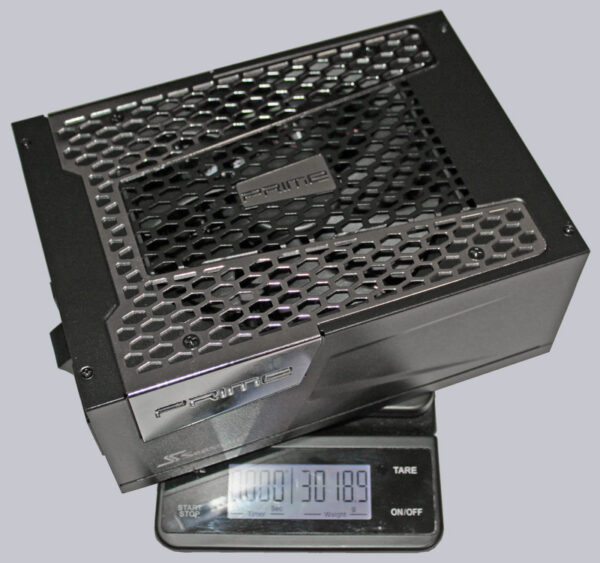
At the beginning we mentioned the worthy device that is included in the scope of delivery. It is an angle adapter that is also a PSU tester. This is a great idea and something we have never seen before.
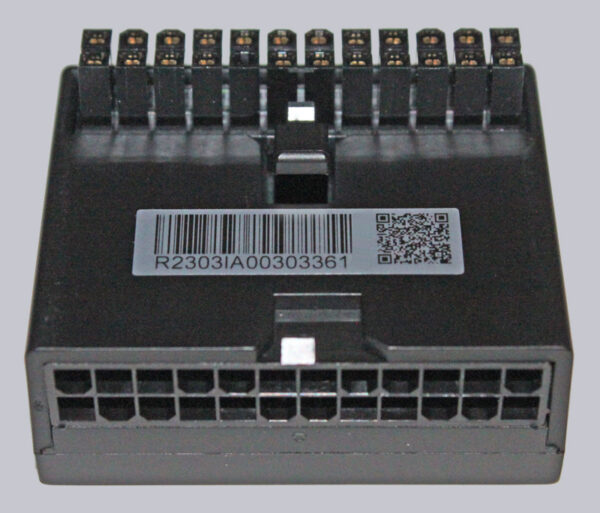
This not only makes it much easier for us to install the rather stubborn MB connection cable, but also enables us to test the PSU immediately if the PC fails to start.
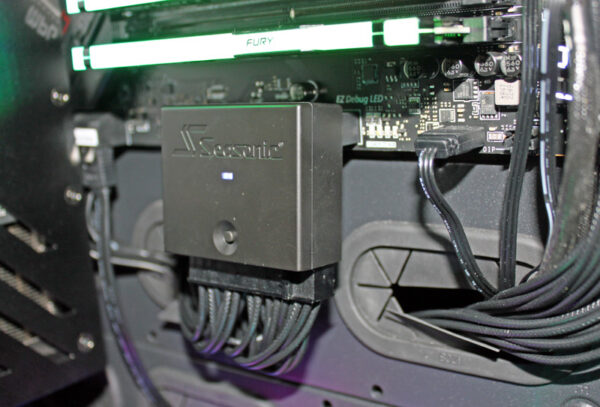
But now we come to the point that every PC hobbyist should envy.
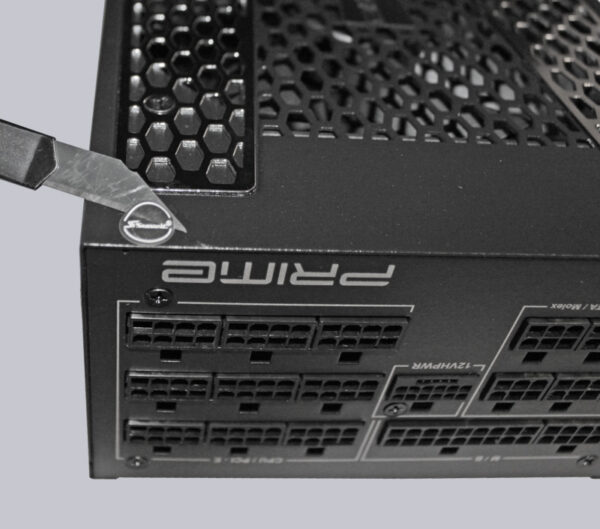
We are not only authorized to carry out repair work on electrical devices, as OCinside testers it is our duty to take a closer look at the inside of the PSU. The soldering work is flawless. We could not detect any cold solder joints or poorly soldered connections. Even the often present flux residues are not to be found here.
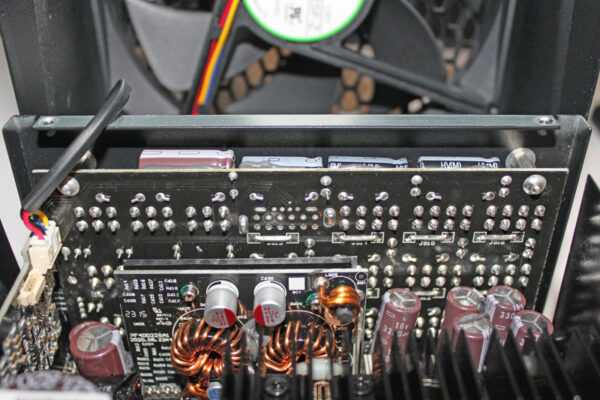
As advertised, high-quality Japanese capacitors with a voltage of 420V and a temperature tolerance of 105°C are installed here. These serve to stabilize the voltage and also filter out interference.
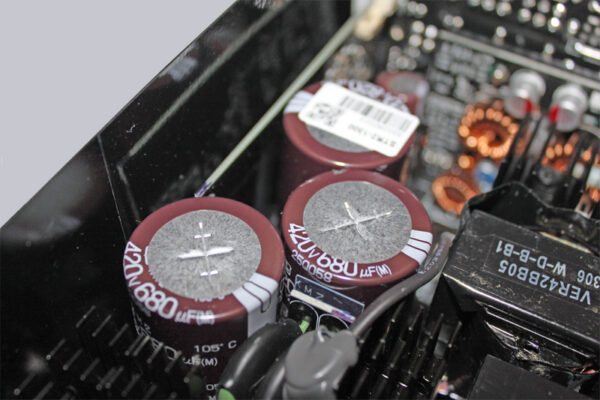
Contrary to our assumption that there is a lot of air in the PSU, Seasonic has utilized the space very well. Large heat sinks allow the fan to take time out for the lower power range. Here too, we can’t see any flaws in the assembly and/or workmanship of the components.
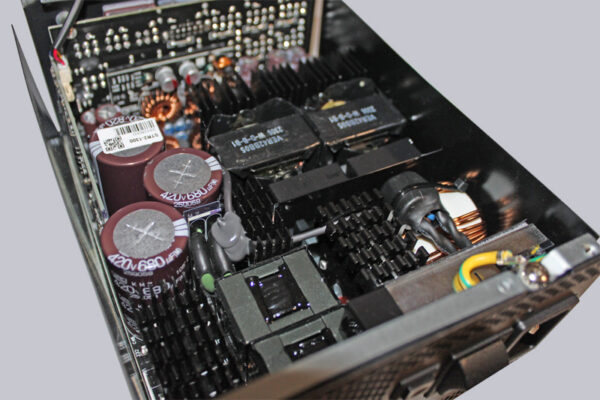
But now we’ve put everyone on tenterhooks enough. Let’s move on to the practical testing.
Seasonic Prime TX-1300 ATX 3.0 PSU Practical testing …

